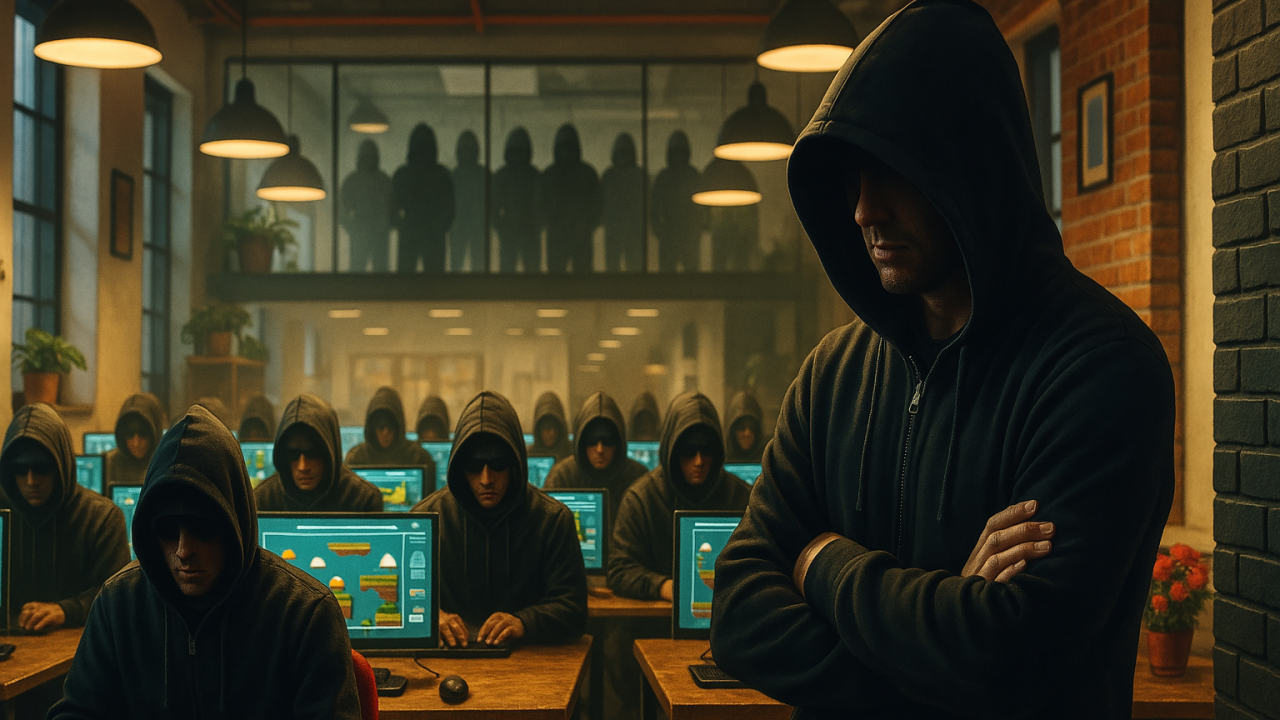
The Clone Wars: Game Dev Between Imitation and Innovation
Journal 16 Michael Khripin April 15

In an industry that thrives on innovation, cloning games has remained a surprisingly persistent—and divisive—practice. From the earliest arcade cabinets to today’s mobile market, the idea of replicating successful formulas has never gone out of style. But what started as a strategy to ride the wave of a hit has evolved into a double-edged sword, shaping the business, art, and ethics of game development.
Let’s unpack the story of game cloning in three parts: how it began, why it’s harmful, and—controversially—why it sometimes works.
A Brief History of Cloning in Game Development
Cloning in games isn’t a modern invention. In fact, the roots trace all the way back to the golden age of arcades.
One of the earliest and most blatant examples? “Galaxian” (1979) by Namco was followed quickly by “Galaga”—a spiritual successor—but also by a sea of clones like “Galactic Invaders” or “Alien Attack,” many of which were near-identical in gameplay. But perhaps the most notorious case was “Pac-Man” and its endless army of clones in the early ‘80s.
As we moved into the mobile era, cloning became faster, cheaper, and more visible. When “Flappy Bird” exploded in 2013, hundreds of clones flooded the App Store within weeks. Entire studios emerged with the core business model of cloning successful hits with slight changes: new skins, minor mechanics, and aggressive monetization.
Today, with access to analytics, user acquisition strategies, and a templated understanding of what “works,” cloning is no longer seen as lazy by everyone—it’s often strategic.
The Dark Side: Why Cloning Is Bad for the Industry
Let’s not sugar-coat it. There’s a reason “cloner” is considered a slur in many dev circles.
❌ It Crushes Creativity
Why take risks when you can copy something already successful? That’s the core problem. Cloning discourages studios from exploring new mechanics, stories, or aesthetics, reinforcing safe sameness over innovation. This leads to a sea of games that look, play, and feel exactly the same.
❌ It Devalues Craftsmanship
While the original developer might have poured months (or years) into prototyping, testing, and refining their concept, a cloner can skip all of that—cutting corners while piggybacking on someone else’s work.
❌ It Damages Player Trust
Gamers are smart. When they see five nearly identical games on the app store, they quickly realize what’s going on. This erodes trust in studios and platforms alike and fuels cynicism about the industry’s motives.
❌ It Rewards Exploitation
Many clones don’t just replicate—they exploit. They strip down gameplay, amp up monetization, and weaponize retention mechanics in pursuit of short-term profit. This undermines the value of quality design in favor of ROI.
The Gray Area: When Cloning Actually Helps
Now, let’s step back and take a breath.
Because while cloning is often seen as a plague, it’s not always black and white. Sometimes, imitation plays a critical role in learning, scaling, and innovating.
✅ Cloning as Learning
For beginner devs or small teams, cloning existing games is one of the best ways to understand the craft. Rebuilding a simple game helps teams study mechanics, flow, and systems in a practical way. Just like musicians learn by playing covers, devs often start by rebuilding classics.
✅ Cloning the Competition (With Respect)
Market-driven cloning can help teams explore why certain mechanics work. Some studios don’t copy blindly—they analyze the DNA of a hit and rework it with their own identity or improvements. Done right, this can lead to valuable iteration rather than soulless duplication.
✅ Cloning Your Own Success
This happens all the time—especially in mobile. You’ve built a hit. Why reinvent the wheel? Smart teams replicate their own success, changing themes or progression systems while reusing the same core. Think of it like making a game engine out of your own product.
✅ Genre Evolution Through Cloning
Ironically, some genres were born out of cloning. The Battle Royale boom post-PUBG or the rise of Auto Chess-like games started as clones and quickly evolved into thriving ecosystems with innovation and differentiation.
Between Theft and Iteration
Cloning is not inherently evil—but it’s not inherently noble either.
It sits somewhere between theft and iteration, between laziness and learning. It can be used to leapfrog, scale, and study—but also to exploit, dilute, and deceive.
As developers, we must be honest with ourselves. Are we borrowing to learn and improve, or are we stripping down someone else’s vision for a quick win?
And as players, we should reward originality, support creativity, and call out clones when they cross the line.
After all, progress in this industry doesn’t come from copying the past. It comes from daring to build something the clones haven’t caught up to yet.







